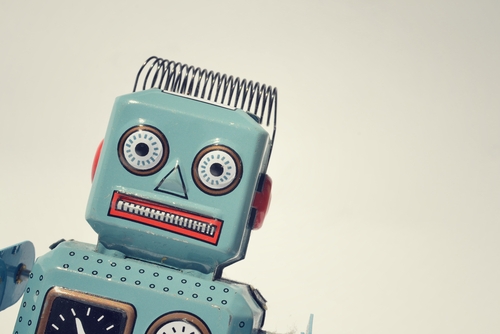Blog
BLOG: The age of robotics and automation is here – are you ready?

The rate of technological change over the last half century has been mind-blowing. Robotic vacuums, drones, bionic skeletons, once phrases used by science fiction writers, now represent real machines in real places, changing lives and business around the world.
Now could be the ideal time to contemplate investing into one or several rapidly expanding robotic markets.
The rise of the co-bot
It is well documented and accepted the industrial & manufacturing robot market will continue to enjoy rapid growth and also expand into new areas of manufacturing, goods handling, packaging, palletizing, and loading. For investors collaborative robots or co-bots are perhaps even more exciting as they fill an enormous automation gap within manufacturing by allowing humans and robots to work side by side especially in the Small & Medium Enterprise (SME) sector.
Co-bots are in fact the opposite of their predecessor industrial robots as they are compact, lightweight, self trained, cheap and dexterous. Key players today in this space include: Universal Robots (UR), ABB, KUKA but we can expect continued focus and M&A activity from the big industrial players as they seek a share of this market with projected annual growth rates of 11.5%.
Targeting the consumer
Beyond the industrial & manufacturing sector another area of robotics growing at an even faster rate relates to consumer and service robots. iRobot’s Roomba, DJI’s Phantom 2 Vision Drone and Grillbot’s Automatic Grill Cleaning Robot are brand leaders in the consumer robotics movement.
This new generation of consumer facing robotics is predicted to grow at the fastest rate of all, at an astonishing Compound Annual Growth Rate (CAGR) of 17% between 2014 and 2019. These new generations of robots have already started the journey to weave themselves into the fabric of our everyday life and one day, just like the computers and smartphones of today, they will be indistinguishable.
Robotic-assisted surgery
Another rapidly expanding area of robotics is within healthcare, especially within robotic-assisted surgery and lab processing. If you are having prostate surgery in the US, it is now highly probable your procedure will be carried out by a robot under keyhole surgery. Intuitive Surgical’s Da Vinci Surgical Robot has become a common sight within operating theatres across the western world and has lead a growing trend of integrating of robotics within this industry.
Robotic developments in the medical world will also help doctors to keep up with the influx of elderly people by quickly and efficiently solving medical issues as our world moves towards an inevitable, yet often overlooked, obstacle – a drastically aging demographic.
It is estimated by 2050, there will be almost 1.5 billion people over the age of 65, according to the Population Reference Bureau. Greater life expectancy is also set to compound the issue. From healthcare to home assistance and even a touch of humour, robotics will shape the way we care for ourselves.
Conclusion
There are a number of enabling technologies driving this next generation of robots forward. Firstly, a greater range and sophistication of sensors for vision recognition, sound, movement detection and force resistance sensing. Secondly, an increasing amount of processing power at a lower cost. Thirdly, increased onboard processing as well as machine learning, code sharing and a dedicated robot operating system.
For all of these growth areas it is early days, but that is really only in terms of how big, how broad and how quickly this megatrend will continue to grow. More powerful technology and processing at lower costs coupled with general public demand and acceptance mean something interesting is happening in the world of people and robots.
Richard Lightbound is partner and chief executive officer for Europe/Asia at ROBO Global.